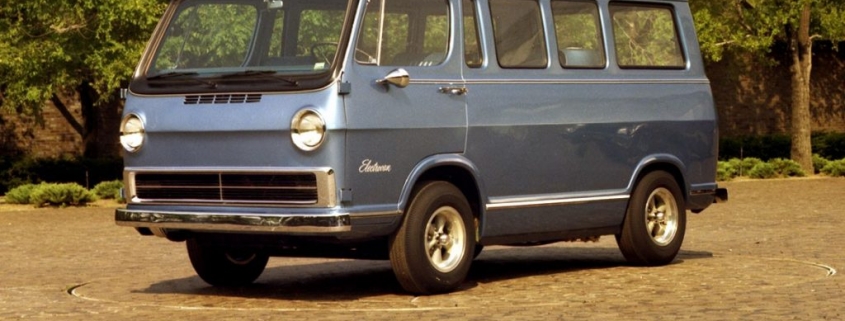Chevy Electrovan: The World’s First Fuel Cell Car
While mainstream hybrid and electric cars take center stage, taking a large chunk out of the world’s total emissions usage, alternative power sources are coming out as well. Fuel cell technology is one such method. But while it seems incredibly new and complex, the idea of a hydrogen fuel source has been around since 1966. Pioneered by Chevy, the Electrovan was a first attempt to rival gas cars with hydrogen fuel cell power.
The fuel cell Electrovan was a space age sensation
With Kennedy’s plans to send mankind to the moon, the 60s were a paradise for new ideas and innovations. The future seemed closer than ever, and a plethora of concepts and technologies that reflected the world of tomorrow. But not only did the Electrovan fit in with that idea, the use of hydrogen went hand in hand with the space program.
Fuel cells were crucial to space missions, as they not only produced power on the Gemini spacecraft, but water for the astronauts to drink. It had everyone excited, so implementing that tech into their concept vehicle made sense. Floyd Wyczalek, the project manager for the Electrovan, recalled how there were 200 people working on the project, “starting in January 1966 and finishing 10 months later.”
Two pressurized tanks (yes, actual tanks) of hydrogen and oxygen were stuffed between the second and third rows, and 32 fuel cells were tucked under the floor. The peak power supply was 160 kW, and could hit a top speed of 70 mph. It was a fully electric car, an impressive feat for the 60s. But beyond that, the Electrovan didn’t rival gas as much as Chevy would’ve hoped.
The shortcomings of the Electrovan

Perhaps shortcomings is too strong of a term. It’s unfair to compare the Electrovan to today’s fuel cell cars, but it didn’t rival the gas cars back then either.
Yes, the Electrovan could get up to 70 mph, but it took 30 seconds to do so. That’s fairly close to the acceleration of a 60s Volkswagen Beetle. Though that lackluster acceleration may have something to do with the Electrovan’s 7,100 lb weight. And the range was 150 which, while excellent for a first attempt, wouldn’t impress too many consumers.
Another issue with the Electrovan was how expensive it was to build and service. The components were costly, and some were rather rare. But on top of all that, the Electrovan wasn’t exactly safe. You might be surprised, but having two highly pressurized tanks of hydrogen and oxygen in the seats isn’t exactly ideal and, when ruptured, led to shrapnel scattering across the test grounds.
The Electrovan was only tested on GM testing grounds, far away from the public eye. But soon enough, the whole project was scrapped. Though clearly, the efforts made by the Electrovan to merge fuel cells and automobiles wasn’t all in vain.
Chevy’s fuel cell efforts today

Whether the Electrovan was an attempt to beat the gas car, or just a test of hydrogen fuel cells, Chevy’s fuel cell efforts aren’t over yet. As recent as 2016, Chevy debuted the Colorado ZH2 with its fuel cell system to test for military use. And in the coming years, GM will be working with Honda to progress fuel cell technology for commercial vehicles even further.
We still face the same problems now that we did back when the Electrovan revolutionized fuel cells. It’s still a matter of getting the infrastructure worked out, and making hydrogen fuel cheaper. But it’s nice to know that the futuristic dreams of fuel cell electric cars aren’t dead yet.
RELATED: How Hydrogen Could Help the Electric Truck
The post Chevy Electrovan: The World’s First Fuel Cell Car appeared first on MotorBiscuit.







